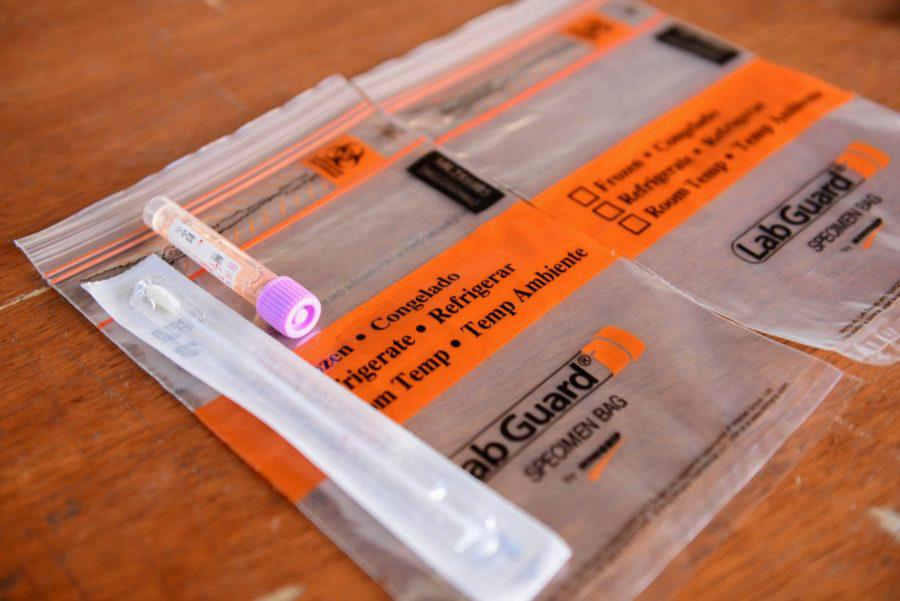Pitt adds 50 COVID-19 cases since Tuesday, shelter in place scheduled for end of semester
March 26, 2021
Pitt added 50 new COVID-19 cases, composed of 42 students and eight employees, between Tuesday and Thursday, with 71 students currently in isolation. The University’s previous case report, covering last Friday to Monday, included eight cases.
This is the fifth case report since Pitt moved into the Guarded Risk posture on March 11, which allows for most activities to be in person with virtual options and limited restrictions. Pitt experienced an increase in COVID-19 cases following large St. Patrick’s Day parties. The COVID-19 Medical Response Office offered testing last week and this week for students who attended these gatherings.
The CMRO said in a Friday evening email that 42 new positive student cases in three days is “worrisome.” The CMRO added that it is “highly concerned about increased transmission rates and a surge in cases” given that the variant first found in the U.K., B117, was detected on campus, and urged students to continue practicing proper mitigation behaviors.
“Please wear a face covering, keep your distance from others, don’t gather in large numbers, avoid making new close contacts and maintain good hand hygiene — even outdoors and even if you have been vaccinated,” the email said.
Kenyon Bonner, the vice provost and dean of students, said Thursday that Pitt received a number of reports of off-campus students hosting large gatherings during Wednesday’s Self-Care Day. Bonner said he is now worried about the impact of the state’s loosened restrictions on bar and restaurant capacity, which begin April 4.
The CMRO announced that Pitt will institute a University-wide shelter-in-place on April 16 so students and families “are as safe as possible” with in-person commencement ceremonies and move-out at the end of the semester. In this shelter-in-place, students are allowed to attend in-person classes and leave their home for essentials, but all other gatherings “should be restricted.”
“We will continue to update the community with more information on end of term testing protocol and shelter-in-place information as plans develop,” the CMRO said.
The Allegheny County Health Department and state health officials have continued to report high case numbers. According to hospital data compiled by The New York Times, about 80% of ICU beds in the Pittsburgh area are currently occupied, compared with 76% statewide and 70% nationally. UPMC Shadyside is at 86% capacity and has 26 ICU beds remaining.
The University has had 1,138 students and 224 employees test positive since June 26, with 1,067 students and 213 employees recovered thus far.
The CMRO also announced that it seems “highly unlikely” that Pitt will be able to vaccinate a majority of students by the end of the semester. Pitt has given more than 10,000 vaccines and hosted 13 clinics in coordination with the Allegheny County Health Department. The University recently received 500 doses of the Moderna vaccine, which are being made available to custodial, food service, security and transportation employees in the 1A phase. Pitt is also offering a small number of these available vaccines to members of neighboring communities. Volunteers are needed, especially those with a clinical background, to help with the Allegheny County vaccine clinics at the Petersen Events Center.
The University is planning for on-campus, in-person instruction for the majority of classes as well as “the full range” of on-campus living and activities for the fall semester. Chancellor Patrick Gallagher said Thursday that these plans are dependent on continued availability of the vaccine across the country. He also said Pitt is not anticipating a requirement that the incoming class have the COVID-19 vaccine.
There are 71 students currently isolated at home or in Pitt’s isolation housing, which is reserved for those who have either a confirmed or suspected COVID-19 infection. Pitt has about 300 isolation beds.
Pitt implemented a systematic, random testing strategy, which involves testing several hundred students each week on Mondays and Wednesdays inside Posvar Hall. The most recent random testing session on Pitt’s data dashboard is from last Thursday, March 18. The Student Health Center has the capacity to test 300 symptomatic students per day.
The University also implemented a variety of new policies due to the pandemic during the spring semester, though some community members questioned whether the safeguards are sufficient. Students moved into dorms in four cohorts, beginning in late January and continuing into early February. Students needed a negative COVID-19 test before moving back on campus. Faculty and staff also have access to mail-in tests if they meet certain criteria.
Additionally, students are encouraged to shelter in place at least seven days before moving in. Once on campus, students are required to shelter in place again for at least 10 days or until the CMRO announces that it’s safe to move about campus. Students may attend classes during this time. Pitt also planned testing of students to monitor the virus’ spread, required students, faculty and staff to complete COVID-19 training and imposed strict penalties for violations of health guidelines.
Bonner said student organizations who host a party or event can face suspension, and students hosting large parties can be suspended. Students living on campus who attend large parties can have their housing suspended for the semester, and students living off campus can be switched to persona non grata status, preventing them from entering University buildings or property.








